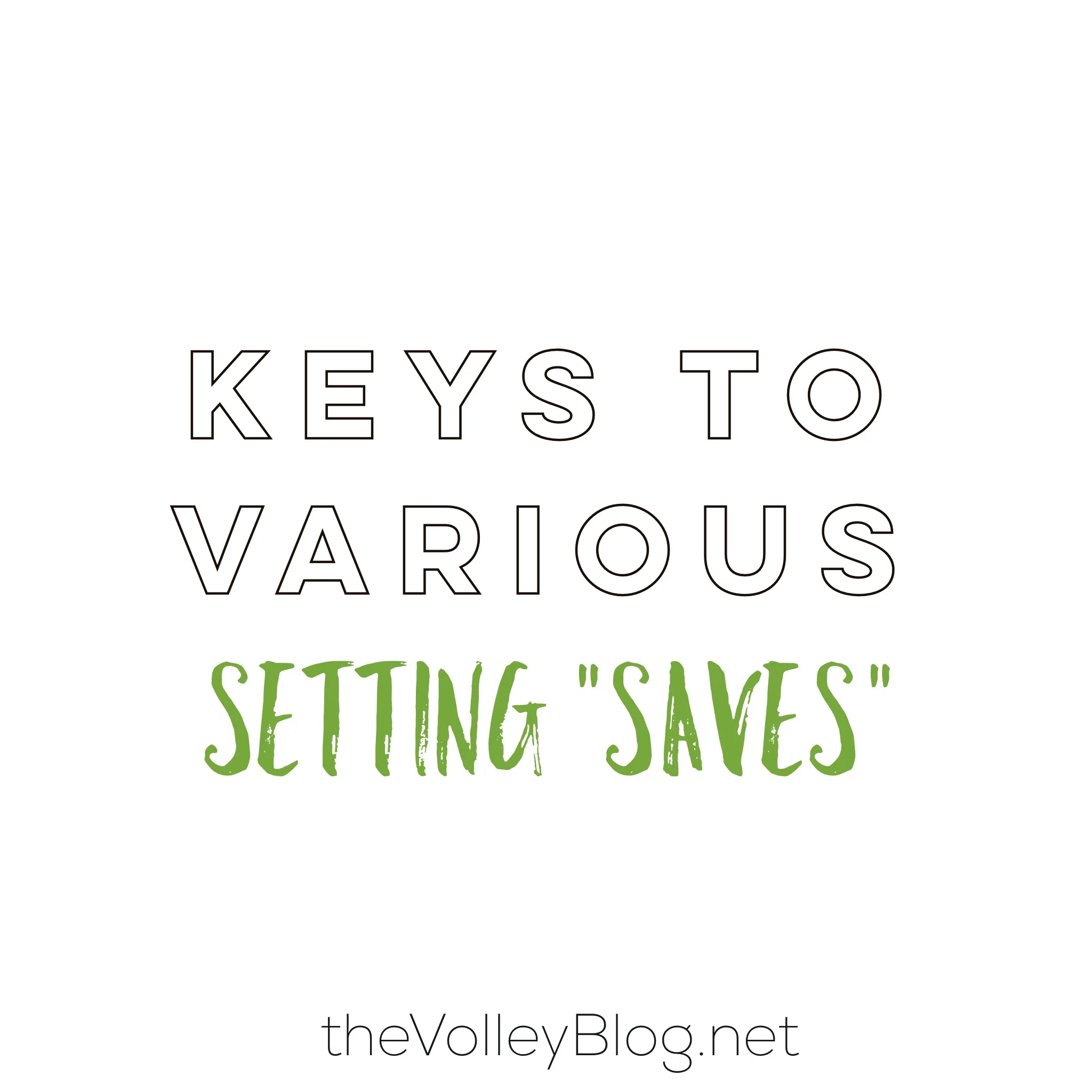There are said to be six basic skills to volleyball: blocking, serving, defense, passing, hitting, and setting. Here they are broken down into the basics of what need to be done in order to be successful at each skill.
Blocking
- Keep your eyes open at all times. It's not easy, but it's important.
- If you miss, work hard to pick up the flight of the ball as quickly as possible after it goes by. This will tell you what your next move should be.
- Make sure to pike, push the ball forward and down, so it is less likely to dribble down in front of you.
- Keep your hands ball-width apart, it's like having a third hand up there!
- Know your opposing hitters. Call them out to your teammates, for their information and your own.
- The farther outside the ball is set, the more likely it is to be hit angle. Stay home and cover the angle, rather than following the hitter outside.
Serving
- A simple float serving technique can score you aces. Simply toss the ball so that your hand contacts directly on the serve.
- Although you won't be able to have complete control over its action, contacting the stem makes the ball behave erratically in the air. That erratic motion makes it harder for your opponent to pass, thus scoring you more aces.
- Follow serving rules with a "safety serve". If you do not have team serving rules then you should have individual rules. Times like after timeouts, on game point, or when the person in front of you misses their serve.
Defense
- Ready, read, react. Begin in a low position at a level where you are still mobile.
- Move quickly and efficiently from base position into your read position. Shuffling or step, cross, hop are both acceptable forms of traveling as long as your eyes remain on the ball and shoulders stay down.
- Be stopped when the hitter is contacting the ball. No matter what. It doesn't matter if you've gotten into position because you need to be able to react in any direction.
- Keep hands in a neutral position with palms up. Thereby able to play overhead or with your platform.
- Know if your setter is backrow or frontrow, this will determine your "perfect dig area". A setter that is in the backrow will have a hard time getting to a tight dig while a frontrow setter will be able to take advantage of the attacking options.
- "Dig with your feet". If forced to run through an off-speed shot or tip, get at least a step or two in before hitting the floor. This will expand your range and improve the quality of your digs.
Passing
- Whenever you are called upon to pass, you must first get into position, which means getting the ball between your knees, and contacting it at about zipper level.
- Then, you must bend your knees. Don't bend at the waist. Bending at the knees allows you to keep your eyes up, so you can see what's going on.
- Collect information from the server as soon as they have the ball. Their arm swing, follow through, and elbow height are all things that cue you as the passer where the ball is going.
- Stay out of your head. Passing is a very mental skills that requires years upon years of practice in order to master and even then you are prone to breakdowns. But only if you let yourself be vulnerable.
- Beat the ball to the spot. Get your feet to where you determine the ball is going to be as early as possible. This allows you to be balanced at the point of contact and shift your weight forward as you complete the pass.
Hitting
- Right from the beginning, making a proper approach is the key to becoming a great hitter. So think about making your beginning players, and those players who can't seem to get it together later on, do hitting footwork everyday as part of their warm up routine.
- Have them get back to the 10' line, make their 2, 3, or 4 step approach, depending upon which approach style you prefer, and go through the entire motion, including a high reach and follow through.
- Every day, their bodies will begin to develop a muscle memory of the proper execution of the approach, and players will begin to experience more success.
Setting
- First, become a good setter. Put up the best hittable set under each circumstance, giving your hitter as many options as possible.
- Once you're a good setter, become a smart setter. To become a smart setter get to know your teammate's strengths and weaknesses.
- Once you're a smart setter then you have to show the skills on the court.
This post was adapted from an original document written by Steve George.

















If there was one position in volleyball that gets a bad rap, it is the Defensive Specialist. While it is easy to write-off these players, just as Setters, Pin Hitters, Middles, and Liberos have roles to take care of, so do Defensive Specialists! Check out our volleyball dictionary definition for Defensive Specialist, intangible qualities a coach wants to see on the court and the 1 key to being a great Defensive Specialist.